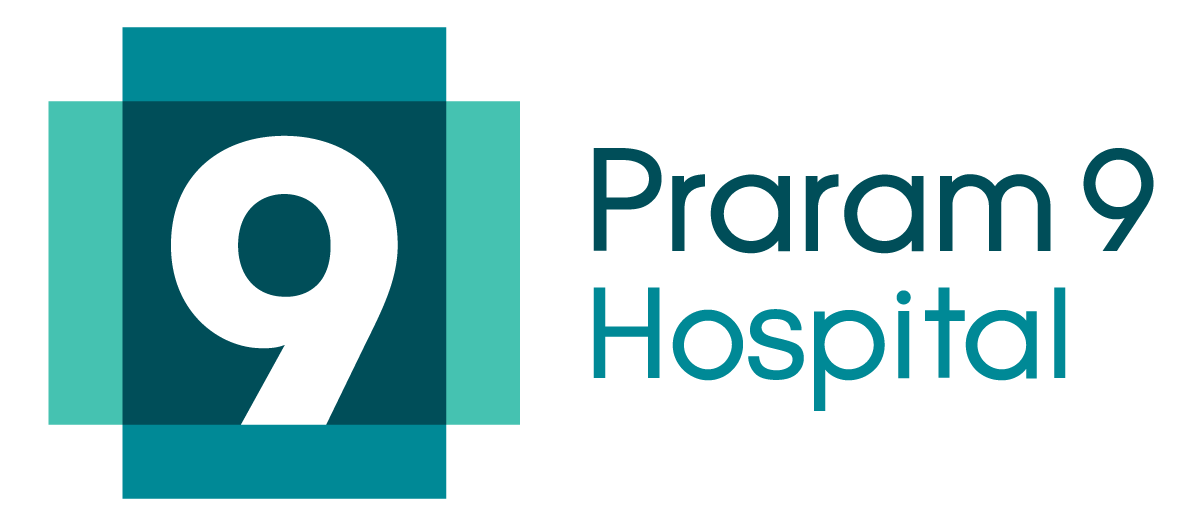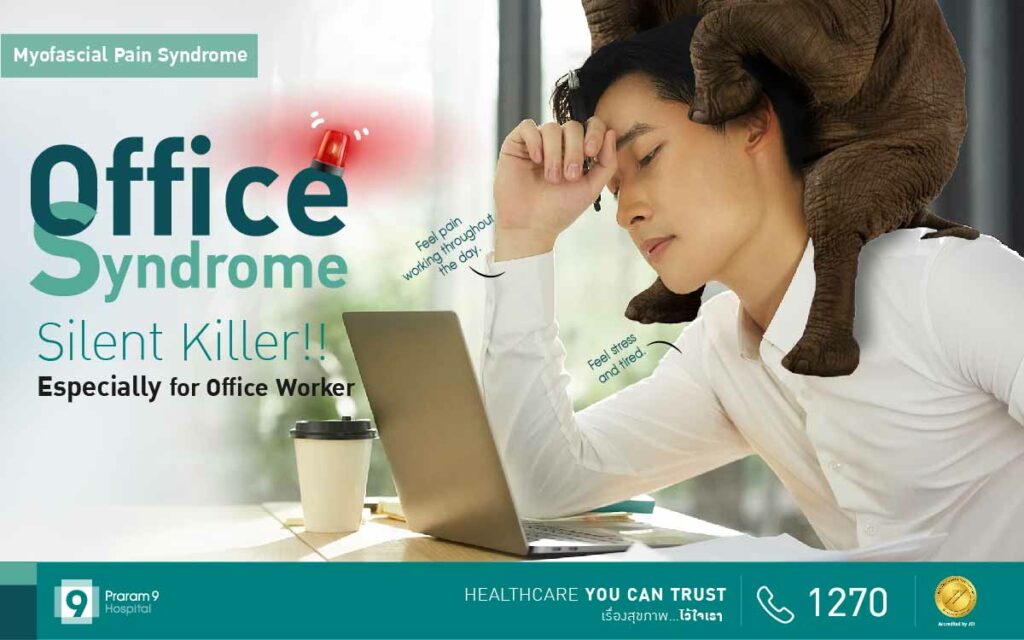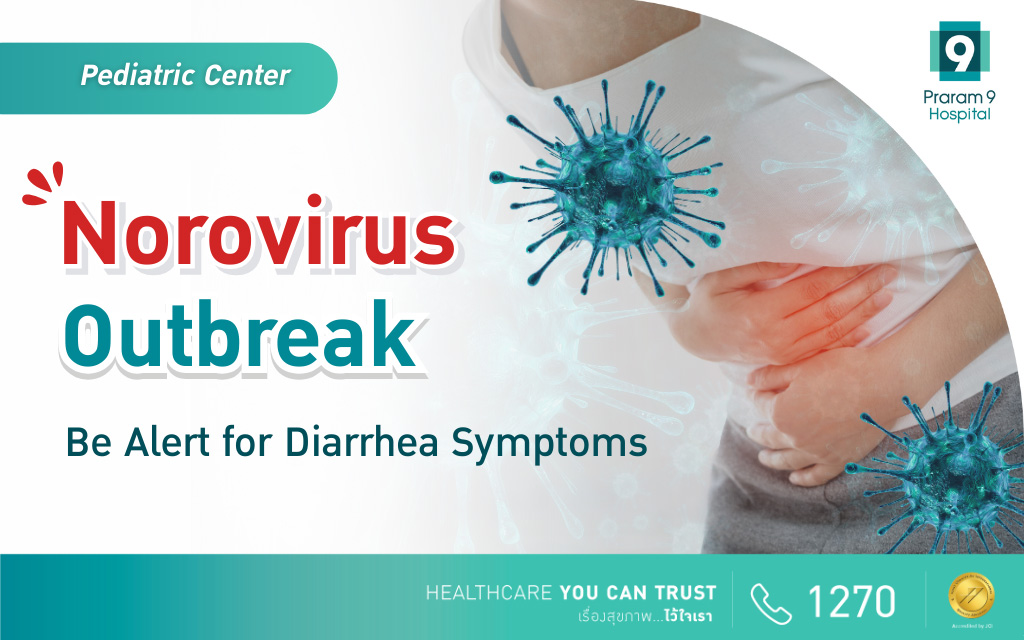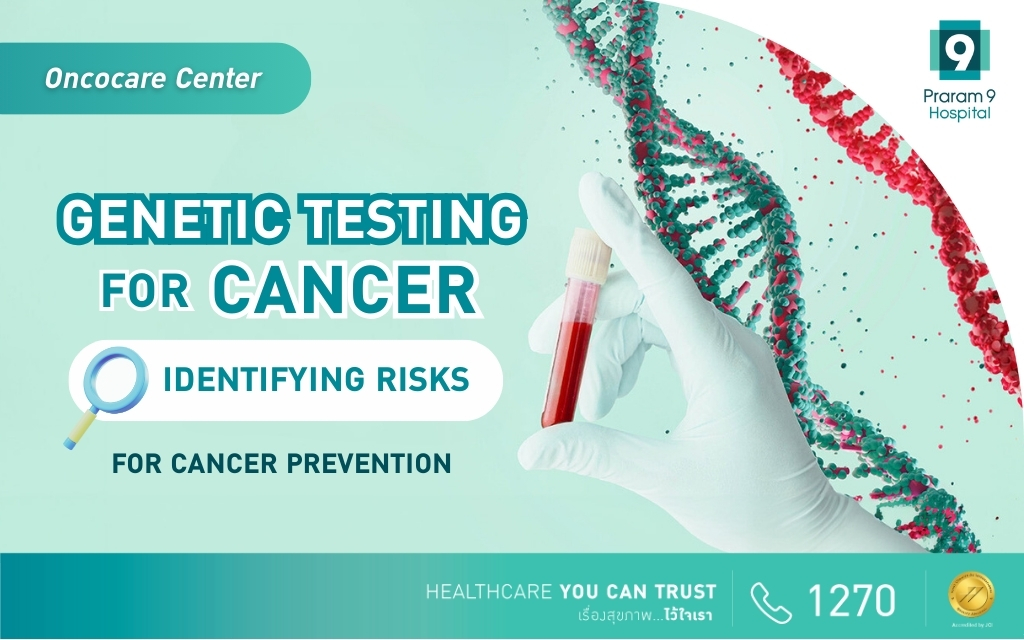Myofascial pain syndrome (Office Syndrome)
Dr.Paraminth Chaivibulphol
Nowadays myofascial pain syndrome has become very common, due to repetitive work in front of computers. We hardly walk, stand, or even move. Moreover, while we use our mobile phones to text or otherwise, our heads tilt forward and shoulders curve. Consequently, we develop back and neck pain. This phenomenon is known as “Text Neck”. Text neck can lead to myofascial pain syndrome in the head, neck and shoulder region.
Myofascial pain syndrome can be temporary relieved by massage. However, if the posture is not corrected, it will become chronic and dangerous to your musculoskeletal system. Moreover, myofascial pain is strongly related to migraine. If you suffer from severe migraine, myofascial pain syndrome treatment together with migraine prevention medicine is the best remedy.
Contents
- What is myofascial pain syndrome?
- What causes myofascial pain syndrome?
- What are myofascial pain symptoms?
- Who is at risk of myofascial pain syndrome?
- Myofascial pain treatment
- Where to treat myofascial pain syndrome? What are the options?
- Summary
What is myofascial pain syndrome?
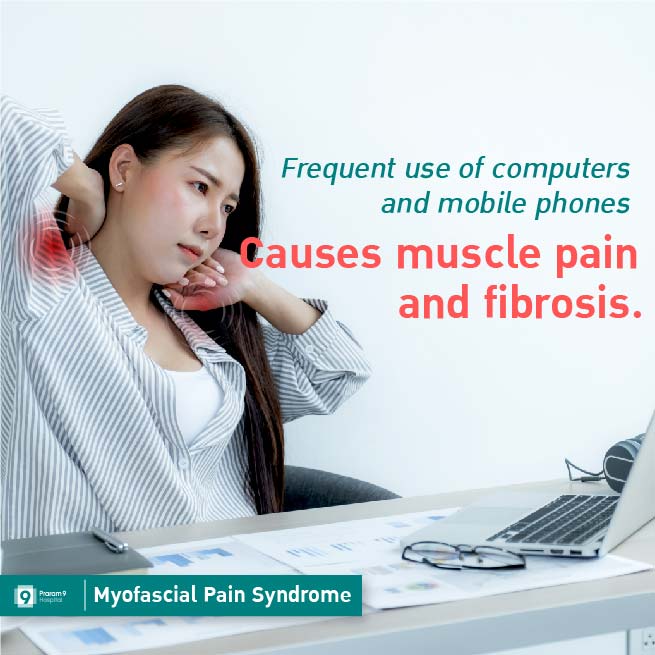
Myofascial pain syndrome is a chronic pain disorder, whereby pressure on sensitive points in your muscles (trigger points) causes pain in the muscle and sometimes in seemingly unrelated parts of your body. This is called referred pain.
What causes myofascial pain syndrome?
Myofascial pain syndrome is caused by repetitive muscle work. This can be due to repetitive motions used in jobs or hobbies, or by stress-related muscle tension. For example, sitting in front of the computer or tilting your head forward to text with the mobile phone, are repetitive works commonly seen nowadays.
Once the muscle becomes injured by repetitive contractions, trigger points develop. Trigger points are palpable nodules within the tight muscle; it can be at the center of muscle belly or at the end plates.
Trigger points creates muscle tenderness and referred pain. For example trigger points in the upper trapezius muscle, a muscle in shoulder regions, could trigger pain in neck and head. This is one of the most common muscles involved in myofascial pain syndrome in office workers who spend all day sitting in front of computer, leaning forwards with curved shoulders.
Trigger point treatment which can resolve myofascial pain include trigger point injection, muscle stretching, posture correction and aerobic exercises.
What are myofascial pain symptoms?
Muscle tenderness and referred pain. The pain can range from a dull ache to a shooting, sharp pain. It can occur in any area of the body but is most commonly around the head, shoulder and back region. If not treated properly, the pain can become chronic.
Apart from pain, some patients report dizziness especially when turning their head from side to side. This is an autonomic phenomenon that occurs with trigger points in sternocleidomastoid muscle. This specific muscle functions as a neck flexor, and is therefore one of the common muscles involved in office workers.
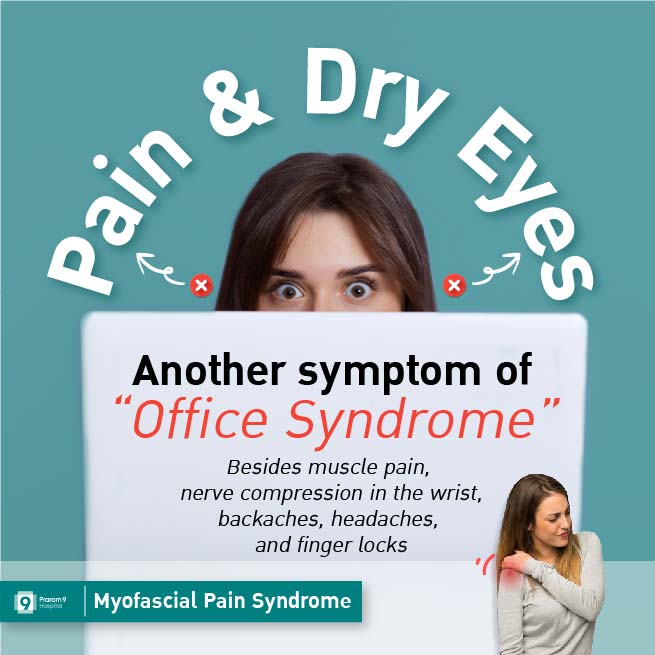
Another common autonomic phenomenon is sensory disturbance. Some patients report numbness, goose bumps or hyperesthesia in their arms or neck. These symptoms may cause patients to be anxious and fearful, due to the similarity to other life threatening disease such as stroke. Neurologist consultation is often involved.
Sometimes myofascial pain syndrome can be secondary to abnormal anatomy of the body, for example spinal scoliosis, herniated discs, or spine degeneration. Some of these diseases should not be left untreated and doctor consultation is mandatory.
Who is at risk of myofascial pain syndrome?
Myofascial pain syndrome can occur to anyone. However, those with higher risk of the syndrome are people who perform repetitive works, such as office workers. Similarly, sport injuries from inappropriate posture can also result in myofascial pain syndrome.
Below is a list of some of those at risk of myofascial pain syndrome:
- Hunching over a smartphone or computer for more than 6 hours a day
- Professional chefs or bakers performing repetitive actions of standing and cooking
- Drivers, especially after long hours driving
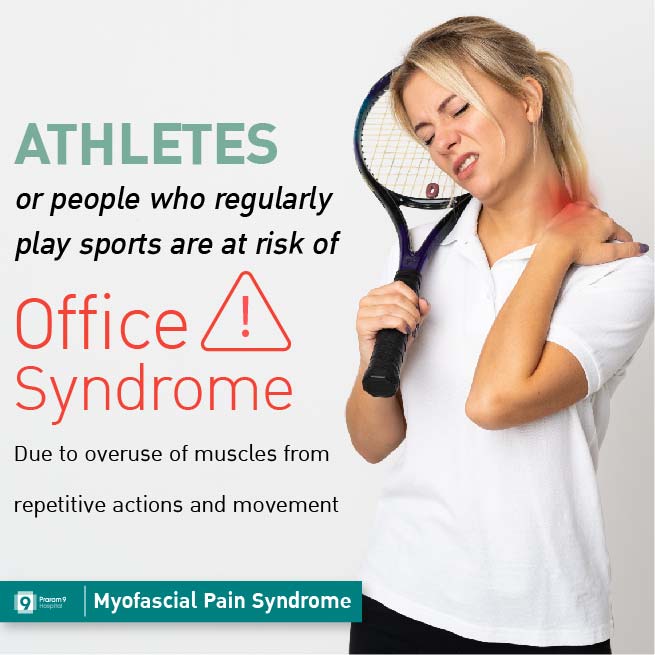
4. Athletes
5. Women wearing high-heel shoes for extended periods of time are at risk of myofascial pain syndrome in the
thighs and back
Myofascial pain treatment
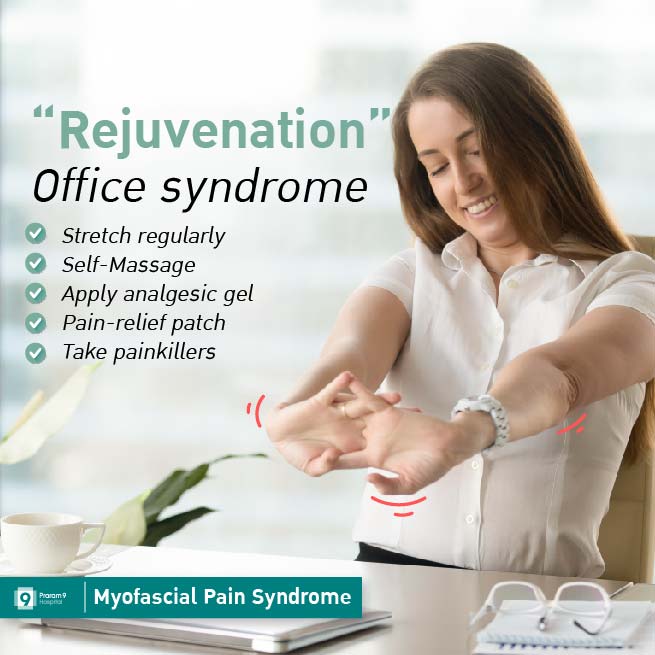
Acute treatment
Trigger point injection and dry needling can relieve the pain effectively and immediately. Trigger point injections are performed by inserting a small needle into the patient’s trigger point. The injection contains a local anesthetic or saline, and may include a corticosteroid. Following the injection, the trigger point is made inactive and the pain is alleviated. Several sites may be injected in one visit. The dry-needle technique whereby no medicine used is also an effective alternative.
Massage and physical therapy is another effective remedy for myofascial pain. Physical therapy is less invasive but more visits are required, compared to trigger point injections. Physical therapy includes electrotherapy, ultrasound diathermy therapy, laser therapy, shock wave therapy and peripheral magnetic stimulation. Choosing the best modality for each patient depends on the expertise and experience of the doctors.
Acute treatment, though effective, provide temporary pain relief. For a more sustainable approach, poor posture should be corrected and exercise therapy should be considered.
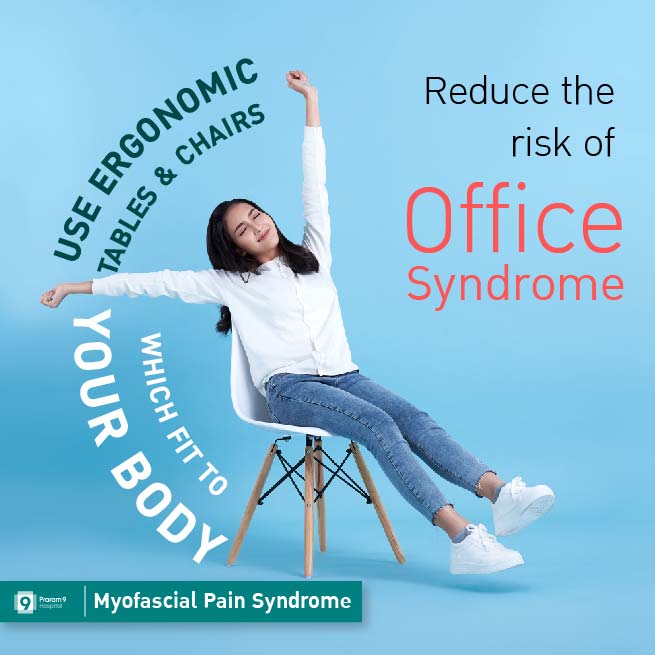
Key points to a proper ergonomic workstation include:
- The monitor height should be placed so that the eyes are in a horizontal plane.
- The keyboard and mouse should be positioned such that the elbow is in 90 degree flexion.
- The wrists should be in a slightly extended position.
- The hips should be at a 90-degree angle and the feet placed flat on the floor.
- The head, shoulder, and hips should be aligned, with the back supported by the chair.
Office workers are advised to relieve muscle tension every 30 minutes, without interrupting the train of thought by setting an interval-timer and placing it across the room. Then they must get up and can stretch while they walk to turn off the buzzer and reset the timer.
Exercise therapy
Exercise is the most important therapy. Multiple modalities of exercise should be considered, including:
Stretching exercises: Stretching is one of the most important steps. Any method that can gently stretch and lengthen a muscle can be considered, including self-stretching using the Anderson technique, or therapist-assisted methods such as Travell and Simons technique, or Janda technique. Yoga is also considered an alternative effective self-stretching exercise.
Strength exercises: Strengthening muscles can reduce the likelihood of them developing trigger points in the future. Strengthening exercises includes high load, and low repetition of different groups of muscles.
Strength exercises: Strengthening muscles can reduce the likelihood of them developing trigger points in the future. Strengthening exercises includes high load, and low repetition of different groups of muscles.
Endurance exercise includes aerobic training such as running, swimming or biking, which strengthens both the cardiovascular system and multiple muscle groups. A regular exercise program minimizes the chance of reactivating trigger points.
Relaxation exercises such as contract-relax and yoga can help decrease mental stress and relax the body.
For best therapeutic results, exercise should be done under supervision of doctors and physical therapists. If done wrongly, exercise can be dangerous. For example, a rapid, forceful stretching motion could cause pain and muscle spasm; they tend to irritate muscle tissue and worsen trigger points, instead of releasing them.
Where to treat myofascial pain syndrome? What are the options?
Best therapeutic results involve expertise of physical rehabilitation doctors, physical therapist and exercise trainers.
Physical rehabilitation will help patients analyze the root cause of their myofascial pain syndrome, and choose the most suitable modality of treatment. Sometimes, investigations such as MRI, X-ray, electromyography and nerve conduction study are needed.
Our Fix and Fit center has cutting edge technology for myofascial pain treatment, including electrotherapy, ultrasound diathermy therapy, laser therapy, shock wave therapy and peripheral magnetic stimulation.A
Peripheral magnetic stimulation (PMS) is a non-invasive method of delivering a rapidly pulsed, high-intensity magnetic field to the periphery. It is a novel and painless approach for musculoskeletal pain.
Shockwave therapy help in myofascial pain by alternating concentration of pain related substances, promoting angiogenesis and increasing perfusion at ischemic tissues. A shockwave is an acoustic wave which carries high energy to painful spots and myoskeletal tissues with subacute, subchronic and chronic conditions.
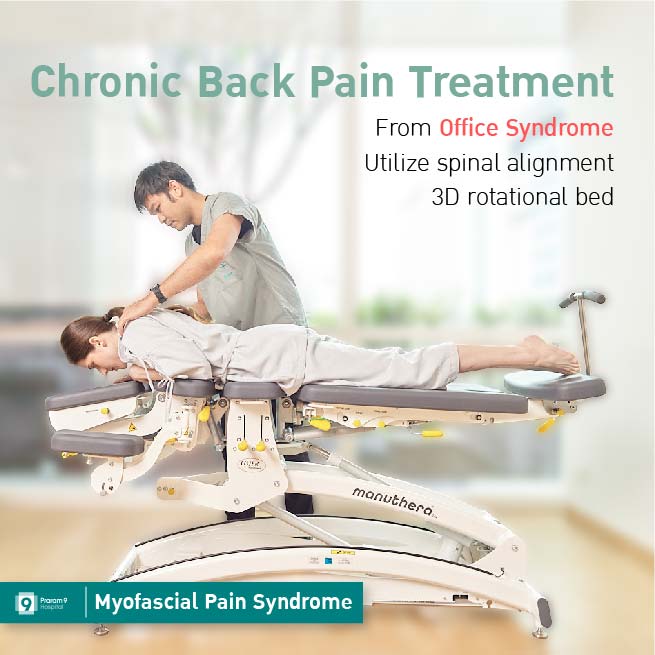
Spinal manipulation technology; our fix and fit center use state of the art traction table for the cervical and lumbar spine with three-dimensional correction arrangement to ensure best therapeutic achievement. This technique best suits patients with spinal scoliosis and chronic back pain.
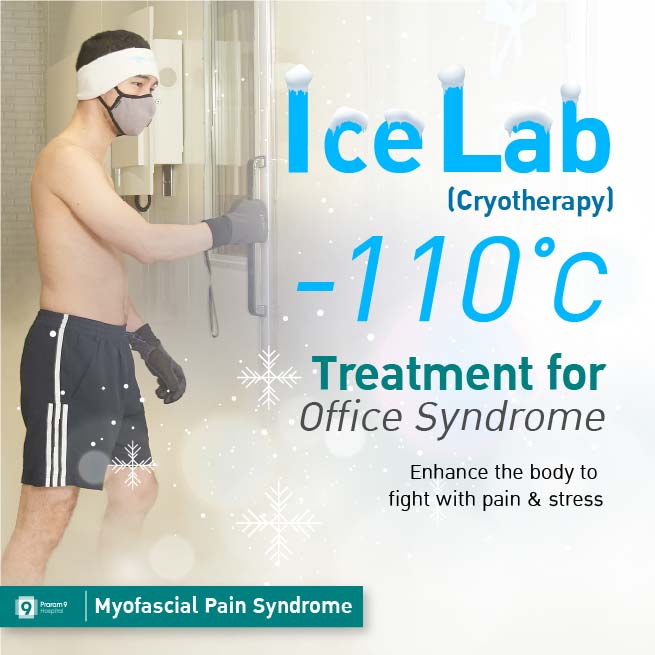
Whole body cryotherapy or ice lab is the therapeutic application of extremely cold dry air, usually −110°C for 3 minutes. The ice lab can relive pain and inflammation in various musculoskeletal disorders. It is also popular amongst athletes as it can be used to promote recovery from sport injuries.
Moreover, we have multidisciplinary teams to help solve your pain problem. Our doctors include experts in rehabilitation, orthopedics, neurology, and psychiatry. Our physical therapists and gym trainers will also ceaselessly assist you to achieve your therapeutic goal.
Moreover, we have multidisciplinary teams to help solve your pain problem. Our doctors include experts in rehabilitation, orthopedics, neurology, and psychiatry. Our physical therapists and gym trainers will also ceaselessly assist you to achieve your therapeutic goal.
You are all welcome to visit and have a consultation with our team at FIX&FIT Praram 9 hospital.
Summary
Myofascial pain syndrome can affect your quality of life. However, you can prevent it by changing your lifestyle with these key factors – stretch and exercise regularly, adopt a proper ergonomic workstation, and maintain a proper posture.
However, if you already have myofascial pain syndrome, we recommend that you consult experts for treatment.
